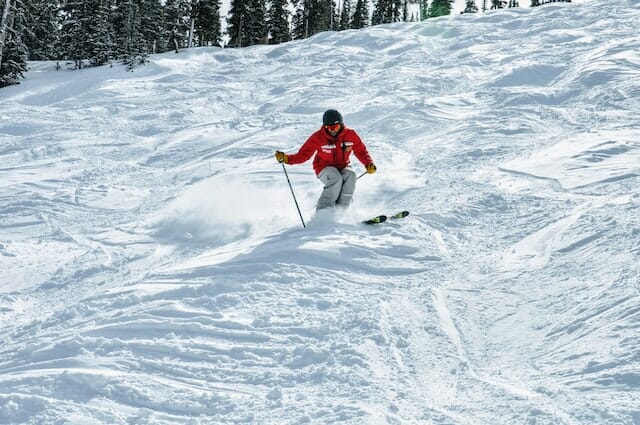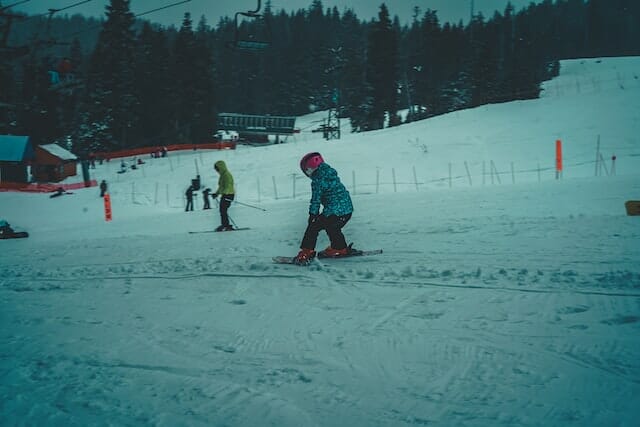
This year, the Winter X Games will be played at the end of January. This is the 27th edition, and it will take place in Aspen, Colorado, just like last year and several years before.
This sports festival, which focuses on extreme winter sports, is held annually and is highly anticipated by skiing and snowboarding fans, among other sports. If you need to become more familiar with this competition, we will tell you all about it in this article.
If you enjoy winter sports, such as ski races, snowcross, and similar disciplines, this great event is ideal for you, so you can’t miss it!
What are the X Games?
As we have already briefly mentioned above, the X Games is a sports competition that takes place every year. In its format, it is pretty similar to the Olympic Games; the difference is that it only encompasses extreme sports and that instead of being held every four years, it is held annually.
The X Games are divided into two modalities, the summer games and the winter games. The summer ones cover the following categories: surfing, skateboarding, scootering, rallying, BMX, and motorcycling; the winter ones cover the following categories: Snowboarding, snowcross, and skiing. In this article, we will focus only on the Winter X Games.
As in the Olympics, this competition awards gold, silver, and bronze medals to first, second, and third-place competitors, but there are also cash prizes for the winners.
Winter X Games
In 1995 the sports channel ESPN created the X Games due to the increasing popularity of extreme sports. Athletes and fans of new and emerging sports found in this competition a place to determine who was the best in each discipline.

Only the summer X Games were initially held, but in 1997, the television network decided to add winter sports to the competition. In this way, snow-related sports were incorporated so that fans of ski races, or snowboarding could also have a place in the competition since it was not until 1998 that the Olympic Games (inspired by the Winter X Games) introduced snowboarding in its list of disciplines allowed to compete; therefore, until that moment, athletes dedicated to this type of sports had nowhere to compete.
Thus, in 1997 the Winter X Games were born, and although they never became as popular as the Summer X Games, they are tremendous and awaited events yearly.
Practices carried out in the Winter X Games.
The following practices are carried out within the disciplines of snowboarding and ski acrobatics.
Big Air: This is a 91-meter course where athletes must perform a 24-meter hybrid jump.
Half Pipe: One of the favorite practices of the fans. It is a large and long semi-cylinder-shaped section, where the curved walls of the structure are at the sides of the athlete. The track is more than 170 meters long and approximately 20 meters wide. Its walls can reach more than 6 meters higCompetitorstitors must perform numerous tricks throughout the course, all in a row. This implies that the landing must be optimal since the next trick starts a second later. The athletes perform a great show of turns, complex rotations, flips, and very high jumps on walls between 15 and 18 degrees.
Slopestyle: In this case, the athletes slide down a track of approximately 500 meters, with several ramps and a vertical drop of more than 80 meters. In this course, there are two preset zones; in the upper one, there are rails (as if they were stair rails) so that the athletes can use them in their acrobatics, and in the lower section, there are three large ramps to perform jumps with turns, grabs and flips. Throughout the course, athletes perform jumps and tricks and go through several obstacles designed explicitly for the event.

The last ramp is the steepest and allows the most impressive jump, which must end with a perfect landing to dazzle the judges.
SnowBikeCross: A discipline incorporated into the X Games in 2017 and mixes the adrenaline of motorcycling competitions with snow. The bikes are modified to compete in the snow; instead of a front wheel, it has a kind ki; in place of the rear wheel, the back of the snowmobile is mounted. As in motocross races, the competition occurs in a closed circuit with hills for jumps.
Special Olympics Unified Giant Slalom: This is a competition in which teams consisting of a Special Olympics athlete and a professional athlete participate. This way, athletes with and without intellectual disabilities are united in the same team. A total of 8 units compete, each consisting of the two athletes mentioned above.
Freestyle: This is acrobatic skiing, but although the word implies “the style is free,” it does not mean that the athlete can do whatever he wants. Of course, each skier puts his stamp and puts together his stunts as he pleases, but all within a framework established by the judges. This means that the judges expect to observe specific criteria in the participant’s performance: a clean, controlled take-off with an excellent landing; originality; tricks of high complexity, etc.
Extreme skiing: Unlike any other skier, the extreme skier must traverse steep, rocky terrain with steep slopes. There are no cleanly designed slopes, but the skier must use the natural elements of the landscape to his advantage to perform as many tricks and jumps as possible. This requires a lot of experience and courage, as it is a challenging course. The skier must also be skillful and agile to quickly dodge any element in the way, which also requires a lot of strength in the legs.
X Games 2023
This year, the Winter X Games will be held in Aspen, USA, as has been the case for several years. The competitions will take place between January 28 and 31.












